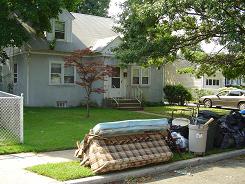What do I do when my tenant wants to leave?
(This article contains 3 FREE form downloads!)
 When a tenant wants to terminate a tenancy, it is done in one of two ways. Either:
When a tenant wants to terminate a tenancy, it is done in one of two ways. Either:
If your tenant wishes to vacate tenancy properly, it usually means giving you, the landlord written Notice to Vacate in a time-frame outlined by your lease agreement. Normally this allows the landlord enough time to prepare and find a new tenant for re-rental.
The usual steps a lease abiding tenant would take to terminate tenancy are:
- Notify the landlord in writing within the proper number of days notice according to the lease. (Most leases require 30 days written notice before the last day of the last full month of occupancy, but many landlords require 60 or more days – In the absence of a written agreement, most states require a minimum of 30 days written notice.)
Keep in mind that a tenant can only give a valid 30, 60 day or whatever notice during a Month to Month tenancy, unless that notice is coordinated with the expiration date of the lease.
The LPA recommends having your tenants use the Tenant’s Notice to Vacate Form found in our Free Forms area of this website. I give my tenants a copy of this form along with their copy of the lease agreement so they’ll be able to give proper notice to vacate as agreed. - After notice is given to vacate, you can make arrangements with the tenants to show the rental to new prospective tenants.
- About 2-3 weeks before the tenant’s proposed move-out, it is a good idea to send the tenant a Moveout Reminder Letter which instructs the tenant how they are expected to return your rental property to you and where to return the keys in order to get a security refund.
- The Moveout Cleanup & Debris Letter is another reminder letter I like to send. Over the years I have found a definite difference in the way people will leave a rental property when I use this form. Use it. It can only help.
- Inspecting the Rental for Damages: As much as the tenants may want to do a “walk through” with you to confirm that they will get the deposit back, DON’T until after they have moved out. And then do it without the tenants present. There are many reasons I say this.
- Most damages are found after the tenant leaves
- In fairness to the landlord, you can not make a full careful list of security deductions with the tenant watching. It takes time to do a good inspection
- Avoid a confrontation that may cause more damage from a disgruntled tenant at move-out. Let them go out smoothly. Then you are in better control over their refund.
*(In California, tenants have a right to a walk-through with the owner before move-out. See California Pre-Moveout Inspection
As far as inspecting the property and calculating a refund with your Property Condition Report and Security Settlement Statement, and handling tenants after they leave, please see my article, What Do I Do when the tenant has moved?
![]()


